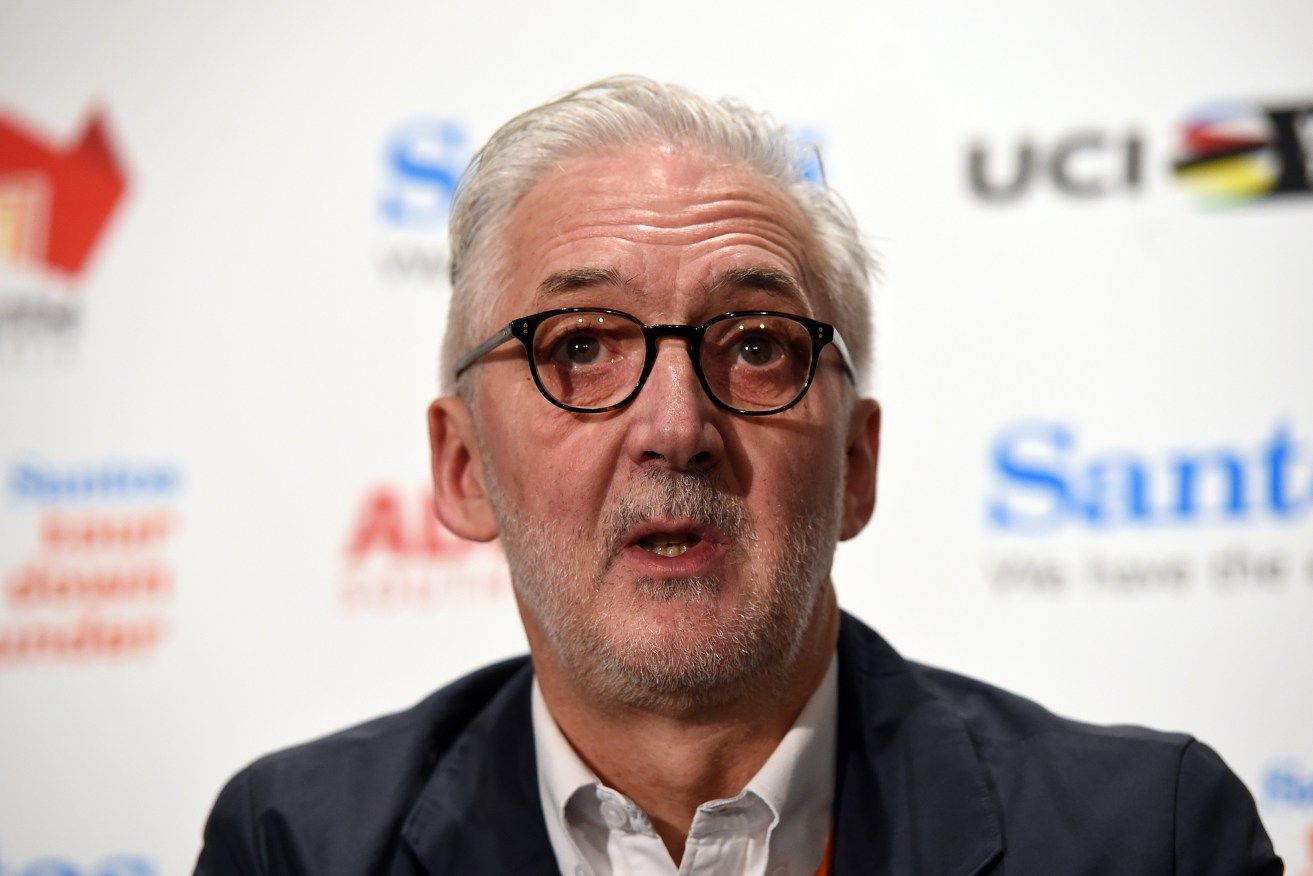‘Motorised doping’ crackdown: “We will test more bikes, more often”
International cycling authorities have promised to step up testing for mechanical doping after an electric motor was found in an elite rider’s bike, signalling decisive action after struggling for decades to combat illegal drug use.

UCI President Brian Cookson speaking at the Tour Down Under in Adelaide last month. Photo: Dan Peled, AAP.
Stewards at the world cyclo-cross championships found the motor on Sunday in the bike of Belgian teenager Femke Van den Driessche, the first such find during a competitive race.
“We will be testing more bikes, more often,” International Cycling Union (UCI) boss Brian Cookson said following the discovery. “Our message to those choosing to cheat is that we will catch up with you sooner or later.”
For decades, cycling authorities did little to combat the use of performance-enhancing drugs.
It was only with the intervention of outside agencies in the 1990s that the culture and effectiveness of testing begin to change, culminating in Lance Armstrong being stripped of his seven Tour de France titles in 2012.
Cookson said the UCI was “trialling new methods” to catch mechanical dopers, but declined to elaborate. The organisation has previously used X-rays or dismantling bikes to look for the tiny motors.
They can be hidden in the downtube, seat-tube or hub and drive the back wheel to give riders a possible speed boost of about 4-5km/h for up to an hour. A tiny battery can be activated from an easily disguised button on the handlebars.
Random controls for mechanical doping have been carried out since it first surfaced in 2010.
Canadian rider Ryder Hesjedal was scrutinised in 2014 when his rear wheel continued to spin furiously after he crashed at the Tour of Spain, though no motor was found.
Last year, grand tour champion Alberto Contador had to refute allegations that he used a motor-assisted bike during the Giro d’Italia after changing bikes ahead of tough climbs, and on last year’s Tour de France, eventual champion Chris Froome also had his bike checked.
Van Den Driessche, whose brother is currently banned for doping – using EPO – denied wrongdoing, saying the bike belonged to one of her friends. Details were vague about whether it was used for racing or just seized from the team compound.
Patrick Lefevere, manager of the Etixx-Quick Step team, called for her to be suspended for life.
UCI regulations on ‘technological doping’ were introduced last year, carrying a minimum suspension of six months and a fine of up to 200,000 Swiss Francs ($A276,700).
Asked what he thought of mechanical doping during last year’s Tour de France, FDJ coach Frederic Grappe said it “could be worse that (traditional) doping”, a point of view shared by many in the peloton.
The Italian manufacturer of Van den Driessche’s bike, Wilier Triestina, threatened court action.
“Our company reserves its right to take legal action against the athlete and any person responsible for this serious matter to safeguard the reputation and image of the company,” Wilier managing director Andrea Gastaldello said in a statement.
-Reuters




